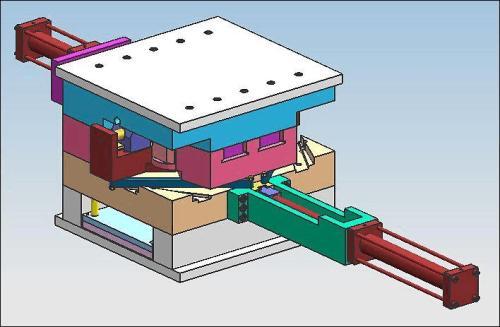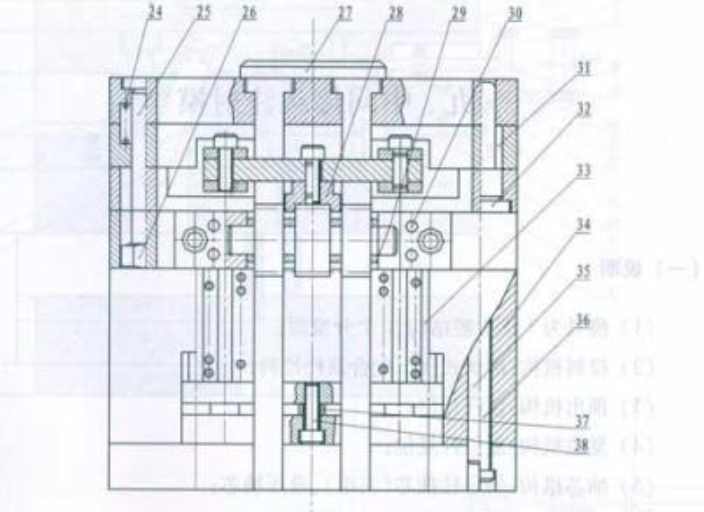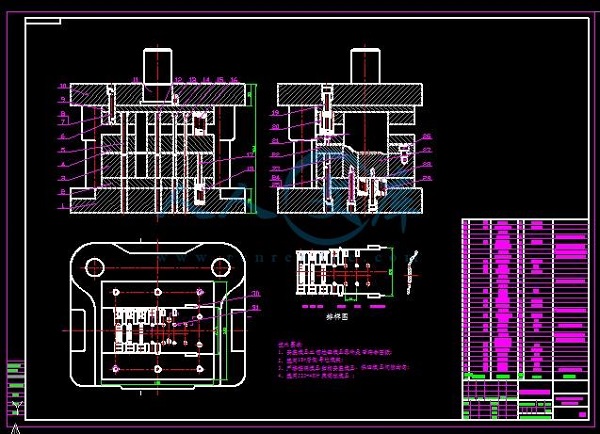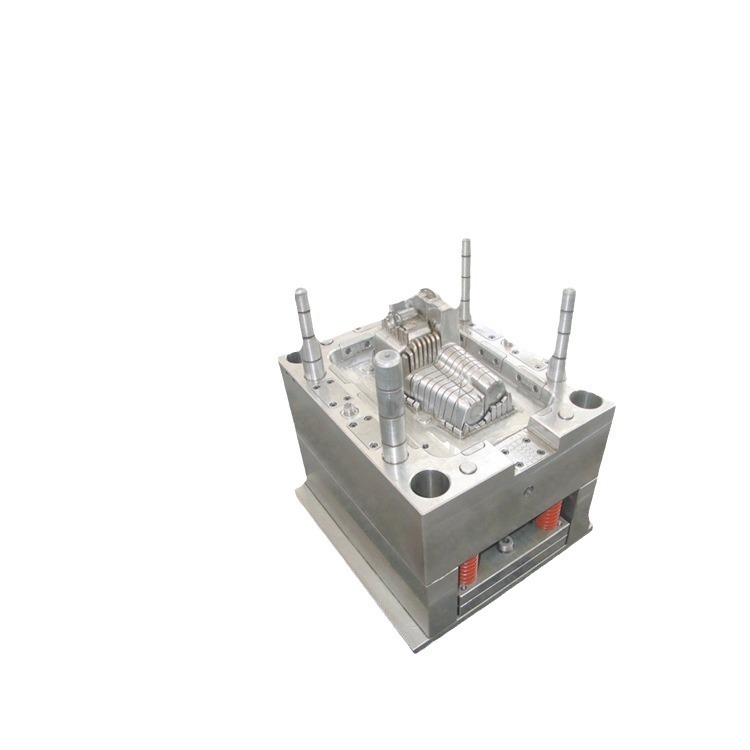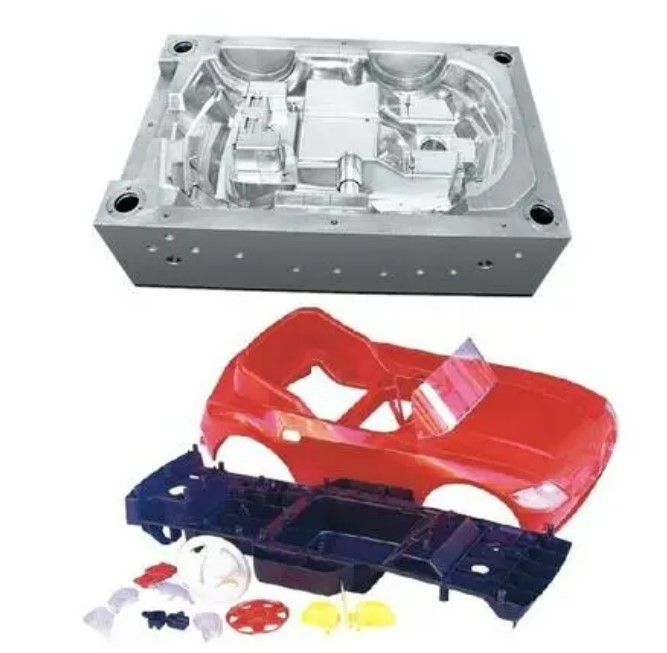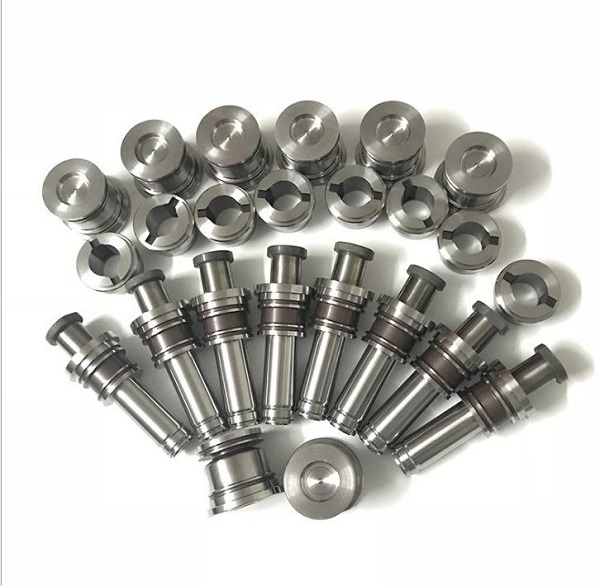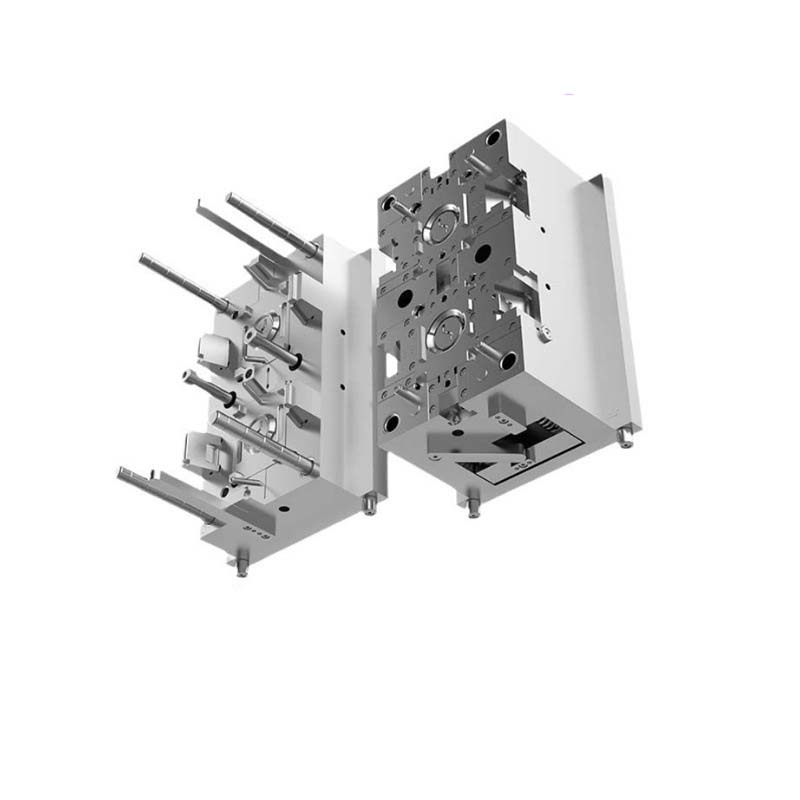Introduction
Understanding the Significance of Initial Drawings
In mold design, drawing the mold structure and part drawings is the first and crucial step. It serves as the blueprint for the entire mold - making process, much like the architectural plans for a building. These initial drawings are not just simple sketches; they are detailed, precise, and comprehensive visual representations that carry a wealth of information essential for every subsequent stage of mold production.
From the perspective of project planning, having well - drawn mold structure and part drawings at the beginning allows for accurate estimation of time, cost, and resources. A study by the American Mold Builders Association shows that projects with detailed initial drawings experience 30% less time overruns compared to those with incomplete or hastily - made drawings. This is because the drawings clearly define the scope of work, the complexity of each component, and the overall assembly requirements. For example, in a large - scale automotive mold project, the initial drawings can precisely indicate the number of cavities, the layout of cooling channels, and the type of ejection system needed. Based on these details, the project manager can accurately allocate labor, purchase the right amount of raw materials, and schedule the production timeline, ensuring that the project stays on track both in terms of time and budget.
In terms of communication within the design and manufacturing teams, these drawings are the universal language. Different departments such as design, engineering, and manufacturing all rely on these drawings to understand their roles and tasks. Designers use them to convey their creative concepts, engineers use them to conduct structural and flow analysis, and manufacturers use them as a guide for machining, casting, and assembly. Without clear and accurate drawings, misunderstandings can easily occur, leading to costly rework. For instance, if the part drawings do not clearly specify the tolerance requirements, the manufacturing department may produce components that do not fit together properly, resulting in significant delays and additional costs for rectification.
Key Elements in Drawing Mold Structure Drawings
Layout Design
The layout design of the mold structure is a fundamental aspect. It involves carefully planning the positions of all components within the mold. A well - designed layout can improve the efficiency of the mold - making process, enhance the quality of the molded products, and even reduce production costs.
| Layout Type | Advantages | Disadvantages |
| Single - Cavity Layout | - Simplified structure, easy to design and manufacture. - High - precision control for each molded part as there is no interference between cavities. - Suitable for products with complex shapes or high - quality requirements. | - Low production efficiency, especially for mass - production needs. - Higher unit production cost due to lower output per cycle. |
| Multi - Cavity Layout | - Greatly improves production efficiency, reducing the production time per unit product. - Cost - effective for mass - production, as the mold cost is 分摊 over more products. | - Complex structure, which increases the difficulty of design and manufacturing. - It is more challenging to ensure consistent quality among different cavities, such as uniform filling and cooling. |
| Stacked Layout | - Saves floor space in the production workshop as the mold can be stacked vertically. - Can achieve a relatively high production output within a limited space. | - Requires more complex cooling and ejection systems. - Higher risk of misalignment during assembly due to the vertical stacking structure. |
For example, in the production of small plastic buttons, a multi - cavity layout is often preferred. With a well - designed multi - cavity mold, dozens or even hundreds of buttons can be produced in one injection cycle, significantly increasing production efficiency. However, in the production of high - end precision medical device components, a single - cavity layout may be chosen to ensure the highest quality and dimensional accuracy of each part.
Component Representation
To ensure that the mold structure drawing is clear and understandable, accurate representation of each component is crucial. The core components like the cavity, core, and runner system should be represented with bold lines or special symbols to highlight their importance.
The cavity, which gives the shape to the molded product, must be clearly defined with detailed dimensions and surface finish requirements. For instance, if the cavity has a complex curved surface, a 3D view or sectional views should be provided to show all the details. The core, which is used to form internal features of the product, also needs to be precisely represented. Its position relative to the cavity, as well as any moving parts associated with it (such as slides for undercuts), should be clearly illustrated.
The runner system, responsible for guiding the molten material into the cavities, should be shown with different line types to distinguish the main runner, sub - runners, and gates. Dimensions of the runner cross - sections are vital as they affect the flow rate and pressure of the molten material during injection molding. Additionally, components like cooling channels, ejector pins, and hot runner nozzles should be represented with appropriate symbols and clear annotations to indicate their functions, sizes, and positions within the mold structure.
Creating Accurate Part Drawings
Dimensioning and Tolerancing
Dimensioning and tolerancing in part drawings are of utmost importance. Precise dimensioning clearly defines the size of each feature of the part, which is crucial for manufacturing. Tolerancing, on the other hand, specifies the acceptable variation in dimensions. For example, in the production of a plastic gear for a precision mechanical device, if the tooth pitch dimension is not accurately specified and the tolerance is too loose, the gear may not mesh properly with other gears in the assembly. This can lead to issues such as abnormal noise, excessive wear, and even failure of the entire mechanical system during operation.
Industry standards like the ISO (International Organization for Standardization) 2768 series provide general tolerances for linear and angular dimensions. For small - scale components (up to 3mm in size), the standard tolerance for un - specified linear dimensions could be ±0.1mm. However, in high - precision industries such as aerospace or medical device manufacturing, tolerances can be as tight as ±0.001mm. Using the correct tolerancing not only ensures the functionality of the part but also affects the cost of production. Tighter tolerances usually require more precise manufacturing processes and higher - precision measuring equipment, which increases production costs.
Material Specifications
Defining material specifications in part drawings is necessary. Different materials have different physical and chemical properties, which directly impact the performance, durability, and manufacturability of the part. For instance, in the automotive industry, if a part that is supposed to be made of high - strength alloy steel is mistakenly made of low - carbon steel due to unclear material specifications in the drawing, the part may not be able to withstand the required mechanical stress during operation. This can lead to part failure, such as cracking or deformation, which poses a serious safety risk to the vehicle and its occupants.
In the injection molding process, the choice of plastic material is critical. A common engineering plastic like ABS (Acrylonitrile Butadiene Styrene) has good impact resistance, dimensional stability, and surface finish, making it suitable for a wide range of applications such as electronic housings. However, if a part requires high - temperature resistance, materials like PEEK (Polyether Ether Ketone) should be used instead. PEEK can withstand temperatures up to 260°C continuously, while ABS starts to deform at around 90 - 105°C under load. Clearly stating the material grade, composition, and any special treatment requirements (such as heat - treatment for metals) in the part drawings helps the manufacturing team select the right raw materials and apply the appropriate manufacturing processes, ensuring the quality and reliability of the final product.
Tools and Software for Drawing
Traditional Drafting Tools
Traditional drafting tools have been used for centuries and still hold some value in the field of mold design, especially in certain creative design stages. Tools such as drafting pencils, which come in various hardness levels like 2H, HB, and 2B, are used for making precise lines. A 2H pencil, for example, produces a light and thin line, ideal for initial sketches and construction lines, while a 2B pencil creates a darker and thicker line, suitable for final outlines.
Drafting triangles, usually made of plastic or metal, are essential for drawing straight lines at specific angles. A 45 - degree and a 30/60 - degree triangle are commonly used. They are useful when creating angled features in the mold structure, such as the inclined walls of a mold cavity for easier part ejection. Compasses are another important tool for drawing circles and arcs. In mold design, they can be used to represent the cross - sections of cooling channels or the circular shapes of runner systems.
Although traditional drafting tools are less precise than modern digital methods, they can be beneficial in the early concept - generation phase. Designers can quickly sketch out ideas by hand, allowing for more free - flowing creativity. For instance, when brainstorming a new and innovative mold design for a unique product, the ease of quickly putting down rough ideas with a pencil and paper can stimulate new concepts that might be more difficult to achieve when starting with digital tools.
CAD and 3D Modeling Software
In modern mold design, CAD (Computer - Aided Design) and 3D modeling software have become the mainstream tools, offering a high level of precision, efficiency, and functionality.
AutoCAD: This is one of the most well - known CAD software. It has a vast library of drawing tools, allowing designers to create highly detailed 2D drawings of mold structures and parts. It is especially strong in 2D drafting, with features like precise dimensioning, layer management, and the ability to create complex geometric shapes. For example, when creating a 2D layout of a mold base, AutoCAD's layer management can be used to separate different components such as the fixed half, moving half, and ejector system, making the drawing more organized and easier to read. However, its 3D capabilities are relatively basic compared to some dedicated 3D modeling software.
SolidWorks: It is a powerful 3D CAD software widely used in the mechanical design industry, including mold design. SolidWorks allows for parametric 3D modeling, which means that changing one dimension of a part will automatically update all related features. In mold design, if the size of a cavity is modified, the associated core, runner system, and other components that are related to the cavity will be updated accordingly. It also has excellent assembly modeling features, enabling designers to easily simulate the assembly process of the mold and check for any interference between components.
Pro/ENGINEER (now Creo): This software is known for its advanced surfacing and parametric design capabilities. It is highly suitable for designing molds with complex surface geometries, such as molds for plastic products with intricate curves. Pro/ENGINEER's ability to handle complex surfaces ensures that the molded parts can achieve the desired aesthetic and functional requirements. It also offers comprehensive analysis tools, such as plastic flow analysis, which can help designers optimize the runner system and gate locations to ensure uniform filling of the mold cavity during injection molding.
CATIA: CATIA is a high - end CAD/CAM/CAE (Computer - Aided Manufacturing/Computer - Aided Engineering) software. In mold design, its strength lies in its ability to handle large - scale and complex assemblies. It is often used in industries such as automotive and aerospace for designing molds for large - sized components. CATIA's advanced simulation capabilities can perform detailed structural analysis of the mold, predicting potential stress points and deformation under different operating conditions, which is crucial for ensuring the durability and reliability of the mold.
Yigu Technology's View
As a non - standard plastic and metal products custom supplier, Yigu Technology deeply understands that precise mold structure and part drawings are the foundation for ensuring product quality and production efficiency. With rich experience in the field, we know that well - prepared drawings in the early stage can significantly reduce the cost of later modifications. A complete and accurate set of drawings allows our manufacturing team to quickly and accurately understand the design intent, which in turn reduces the probability of errors during production. This not only shortens the production cycle but also improves customer satisfaction. By investing more time and effort in the initial drawing stage, we can avoid costly rework and ensure that the final products meet or even exceed customer expectations.
